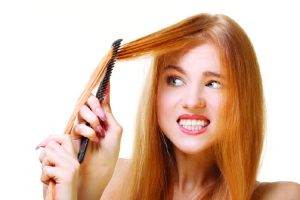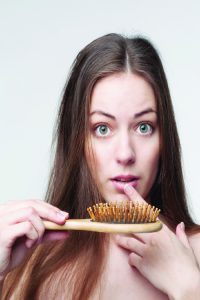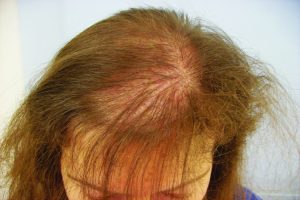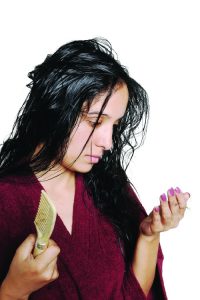Table of Contents
A man’s balding head vs. woman’s balding head
Do you observe a pattern of hair fall related scare in your mind, every second year as you age? Loss of hair is not singularly a problem associated with only females. In larger scenarios, even our male counterparts witness the same cries with hair-loss. Humans of all-kinds, all over the world, have not yet completely adapted to the idea of a bald head, we are only at the brink of the 21st century; changes are only happening.
However, men have successfully fashioned the idea of a clean bald head that looks slick and sexy too. This
also has been more acceptable with masculinity, but not akin to the female kind. Women, the likes of celebrities have started to experiment with buzz cuts or bald head. Shunned by some but maybe appreciated by many for their sheer boldness, people are starting to find the idea of a starkly exposed head a great statement that is not only incredibly brave but also incredibly beautiful for both the sexes.
Why women find hair-loss emotionally draining and difficult to handle
Rapid hair-loss or patterned baldness is definitely a problem for all those who do not wish to lose their lovely hair as opposed to their choice of growing, styling, and keeping it. The fluffing or long, in either case; good, shiny and tameable hair is of course an asset, always in most ways complimented to genes, ancestors, diet, and weather conditions, overall physical and mental health. Hair stylists have not only changed the way we view what adorns our head, but ourselves wish to experiment into new patterns, cuts, extensions, hair colour and many such cosmetics changes. Hair is like your longest tissue, the skin on your body, it needs looking-after and maintenance because it is meant to age.
Major cause for worry comes for the “fairer skin” as the thinning of hair affects their overall self-well-being and emotional standing in socially acceptable norms. Women are highly attributed for their well-defi ned looks, curvaceous body and long silken hair in general aspects and they love taking care of it. The way your hair sits on your head is capable of changing the way your face looks.
How is female pattern baldness related to ageing?
Like age shows on your skin with wrinkles or patchiness, so does your hair with split-ends, dryness, whitening or breakage. Unnecessary hair-fall can be vicious and is a concern directly relating or attributed to ageing as it being the commonest symptoms of mental stress or an unhealthy system. In addition, it questions the right levels of hormones in the body as well as external hygiene of the scalp tissue that exhibit dry, itchy, or flaky irritations and rashes caused by pollution or changes in habitat.
The importance of maintaining healthy hair
Considering scientific findings, it is found that an average person has 5 million hairs on their scalp. Hair grows all over your body except on your lips, palms, and the soles of your feet. Each area of your body has a certain range of hair growth depending on their locations. It is hence, pretty obvious that the follicles in the scalp’s skin tissue is set for a maximum. Every succeeding month amounts to half an inch growth of your healthy hair. In most cases, hair strands grow for up to six years and then fall out.
Development of a new strand comes about in its place and a cellular cycle is seen adopted by all those follicles of hair on the skin of your head. Hair keeps you warm and is the fi rst layer of protection from small particles in the air that cause infections, protecting your eyes, ears, and nose.
Female pattern baldness because of body ageing
Bodily functions deteriorate over a period with the ageing biological process. Other physical, chemical, or genetically unfriendly processes seem to catalyse ageing, which in turn starts to give signs at the exterior level. The typical pattern of hair-loss that persists over a period has come to be known as female pattern hair loss or FPHL that affects many millions of women around the globe. Scientific studies show that the cause is generally attributed to hormonal functions, ageing and genetic combinations. Now looking at baldness as that sees progress to trouble with age, it definitely is a problem. Rapid hair loss is a direct connection to your body mechanism. It is indicative of something not rightly balanced in your overall system.
Scientific reason for FPHL
In women, androgenic alopecia is the distinctive reason for female pattern hair loss (FPHL). From the majority of women who are severely affected by FPHL, 40% show heavy signs of hair loss by the time they reach 50 years of age. These could come about in bought of cyclic hormonal defi ciency or conditions. Remarkably so, it has been statistically recorded that women are not likely to have a full head of hair even as they reach the age of 80, a less than 45% females have longevity in hair growth and maintenance.
Only excessive production of androgens in the body can be blamed for those women who experience patterned baldness as that in the case of males. This is not yet a proven fact as few experiments show that increasing levels of oestrogens also supress hair growth. Menopause or the period during which a woman goes through varied level of hormonal changes due to age and fertility conditions, alopecia could well take roots. It is quite normal to lose 50-100 hair a day, but in the case of FPHL, the scalp undergoes diffuse thinning of hair due to hair shedding resulting in reduction of hair volume. The strong genetic reason behind patterned baldness is widely observed amongst most cases.
It is not necessary that every form of hair loss is a cause of FPHL. Other reasons such as a certain autoimmune diseases, lack of iron or vitamins, medication or chemotherapy, an illness, surgery, or even pregnancy and over-styling of hair could result in hair-loss that is severe and unacceptable. The first step in the treatment or reversal for the process is diagnosis of the real cause and then following diligently the set medication meant for precautions. Women also need to understand that the hair loss coherent with female pattern baldness is rather permanent and therefore needs immediately to be looked after.




















